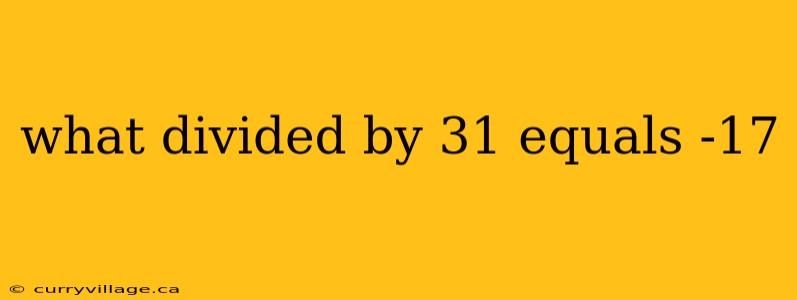This article will guide you through solving the simple equation: "What divided by 31 equals -17?" We'll explore the steps involved and provide the answer. Understanding this type of problem is fundamental to basic algebra.
Understanding the Problem
The question, "What divided by 31 equals -17," can be expressed as an algebraic equation:
x / 31 = -17
Where 'x' represents the unknown number we need to find. Our goal is to isolate 'x' on one side of the equation to determine its value.
Solving for x
To solve for 'x', we'll use the inverse operation of division, which is multiplication. We'll multiply both sides of the equation by 31:
(x / 31) * 31 = -17 * 31
This simplifies to:
x = -527
Therefore, -527 divided by 31 equals -17.
Checking Your Work
It's always a good idea to check your answer. Let's substitute -527 for 'x' in the original equation:
-527 / 31 = -17
This confirms our solution is correct.
Similar Problems & Practice
This fundamental concept can be applied to a wide variety of similar problems. To practice, try solving these:
- What divided by 5 equals 12?
- What divided by -7 equals 9?
- What divided by 15 equals -2.5?
Remember to use the same method: multiply both sides of the equation by the divisor to isolate the unknown variable.
Conclusion
Solving the equation "What divided by 31 equals -17?" demonstrates a basic but crucial algebraic principle. By using the inverse operation of multiplication, we successfully found the solution: -527. Mastering this type of problem will build a strong foundation for more complex mathematical challenges. Remember to always check your answer to ensure accuracy.
